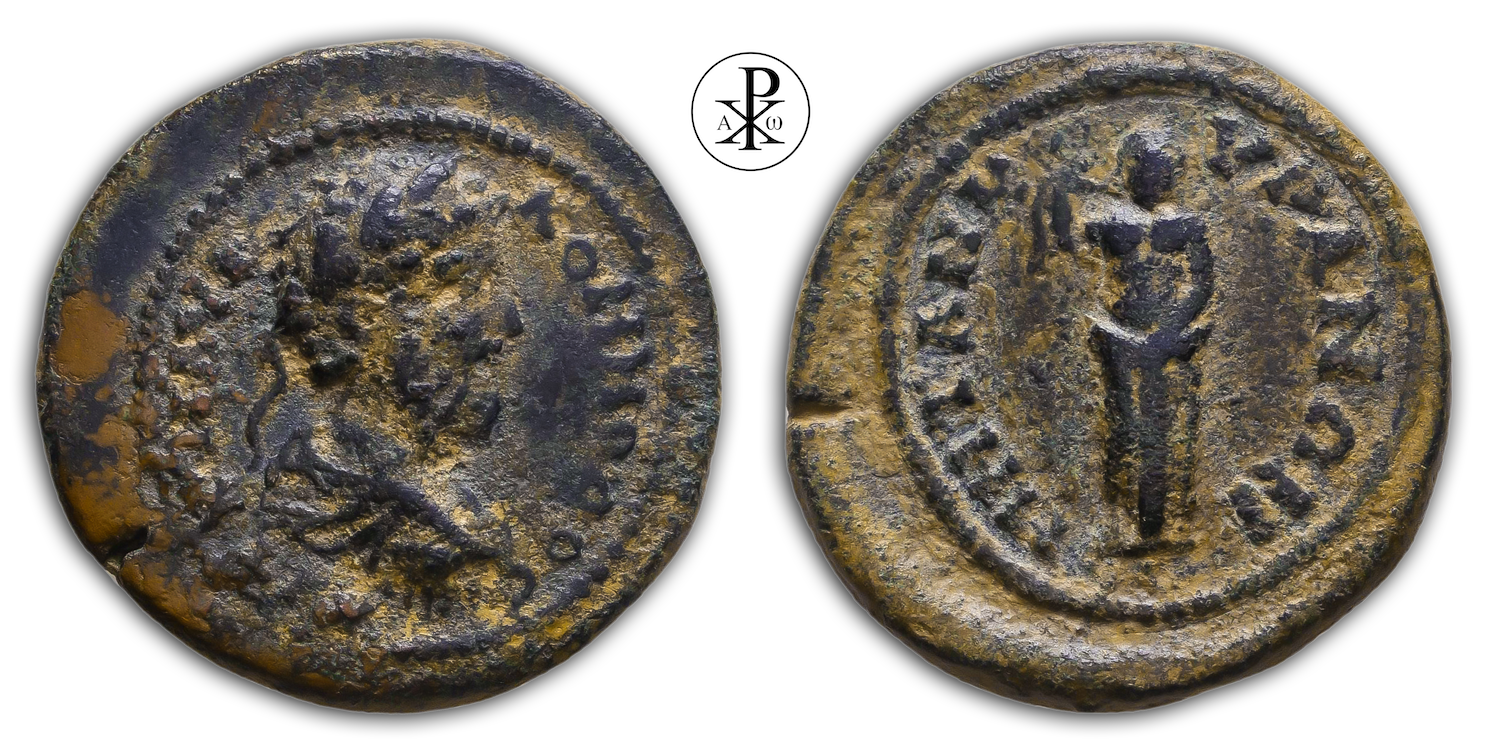Imperator Caesar Marcus Aurelius Commodus Antoninus Augustus
Reign: Commodus
Mint: Ancyra, Galatia
Date: 180/191 AD
Nominal: Bronze
Material: AE
Diameter: 28mm
Weight: 12.50g
Reference: RPC IV.3 10050 (#4 this coin)
Reference: SNG Paris 2466
RPC Online: https://rpc.ashmus.ox.ac.uk/coins/4/10050
Rare: Specimens 4 (2 in the core collections)
Provenance: NBS Numismatics Auctions Eindhoven, Netherlands (Auction 16, Lot 234)
Pedigree: –
Obverse: Laureate-headed bust of Commodus wearing cuirass and paludamentum, right
Inscription: ΑVΤ Κ Μ ΑVΡ ΚΟΜΜΟΔΟϹ
Translation: Autokrator Kaisaros Marcos Aurelios Kommodos
Translation: Imperator Caesar Marcus Aurleius Commodus
Reverse: Aphrodite standing, facing, holding up hair with right hand, dress with left hand
Inscription: ΜΗΤ ΑΝΚVΡΑΝΩΝ
Translation: Metropolitan Ankuranon
Translation: City of Ancyra
Comment: The ancient city of Ankyra (Latin Ancyra) is the present-day capital of Turkey in the province of Ankara of the same name. Originally a flourishing Phrygian settlement on the Persian Royal Road, it became the capital of the Roman province of Galatia in Roman times. The Celtic Galatians had come to Anatolia as mercenaries in the 3rd century BC and initially developed into a land pest there. After they had been settled in the interior of Asia Minor from 268 BC, Ancyra became the centre of the Galatian tribe of the Tektosages. In 189 BC Ancyra was occupied by Gnaeus Manlius Vulso, but remained under regional rule. The Galatians were not united under one rule until 44 BC after Caesar’s assassination by King Deiotaros, but already in 25 BC Galatia became a Roman province and Ancyra its capital. The Temple of Augustus, on the walls of which there is an inscription that has become famous as the Monumentum Ancyranum, the Roman baths and the Column of Julian have survived from Roman times.
According to Greek mythology, Aphrodite is the goddess of love, beauty and sensual desire and one of the canonical twelve Olympian deities. She was particularly revered as the patroness of sexuality and procreation, ensuring both the continuity of nature and the continuity of human communities. Her counterpart in Roman mythology is Venus. The Aphrodite depicted here on the coin could have been the representation of a cult statue because of her strictly frontal and stiff posture and hieratic representation. Sabahat Atlan (“der Aphroditenkult von Ankara im Altertum”) assumes that there must therefore also have been an Aphrodite cult and temple in Ancyra. He goes on to say that, on the basis of further coin representations, it is a matter of Aphrodite Anadyomene, i.e. representing the birth of Aphrodite. As the wooden cult statues of Athena and Artemis used to be carried to a lake near Ancyra in an annual ceremony and washed there, it could have been assumed in the past that Aphrodite was born in this lake. Possibly there was a local cult tradition in Ancyra which assumed that the goddess was born here.
